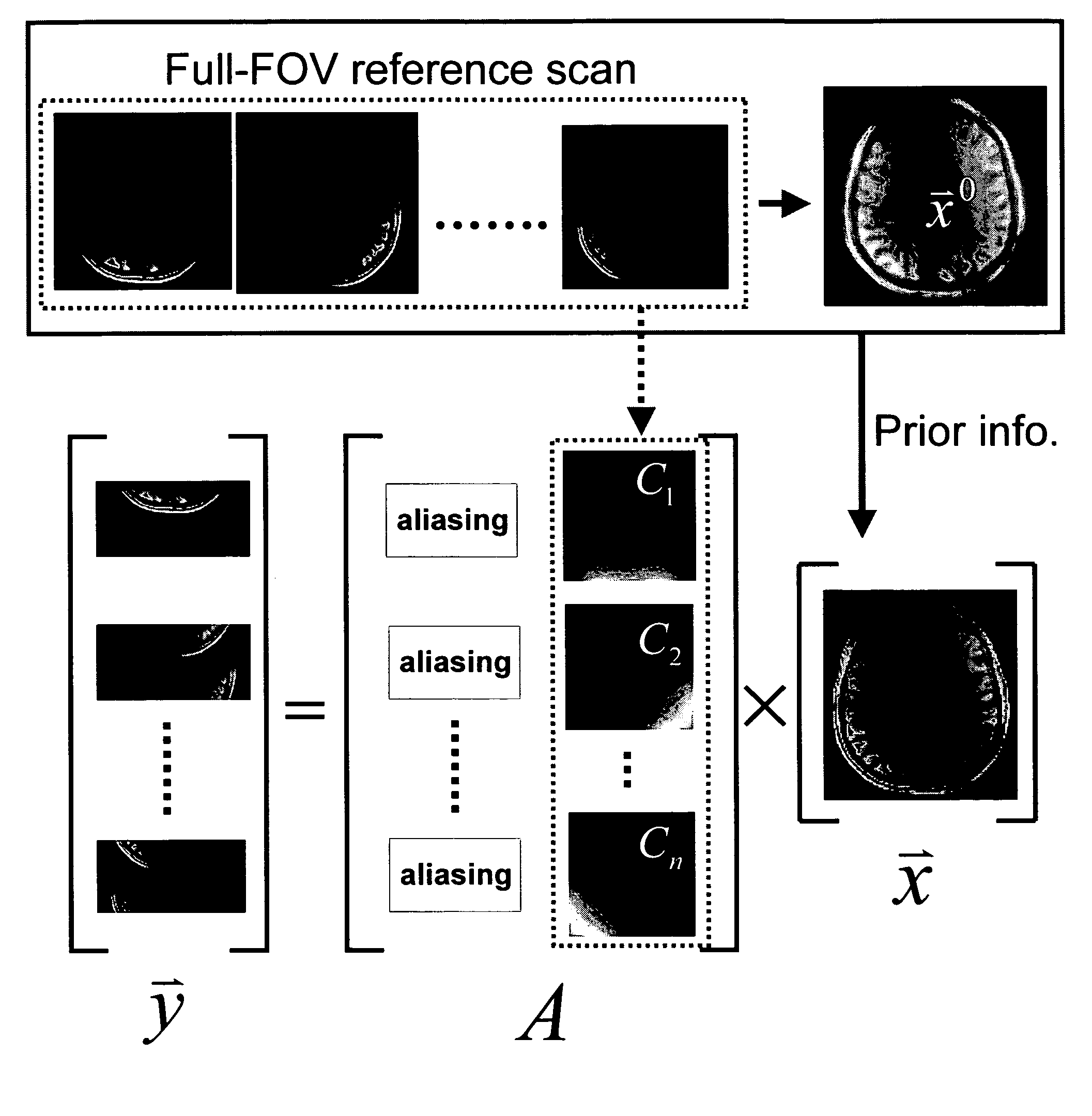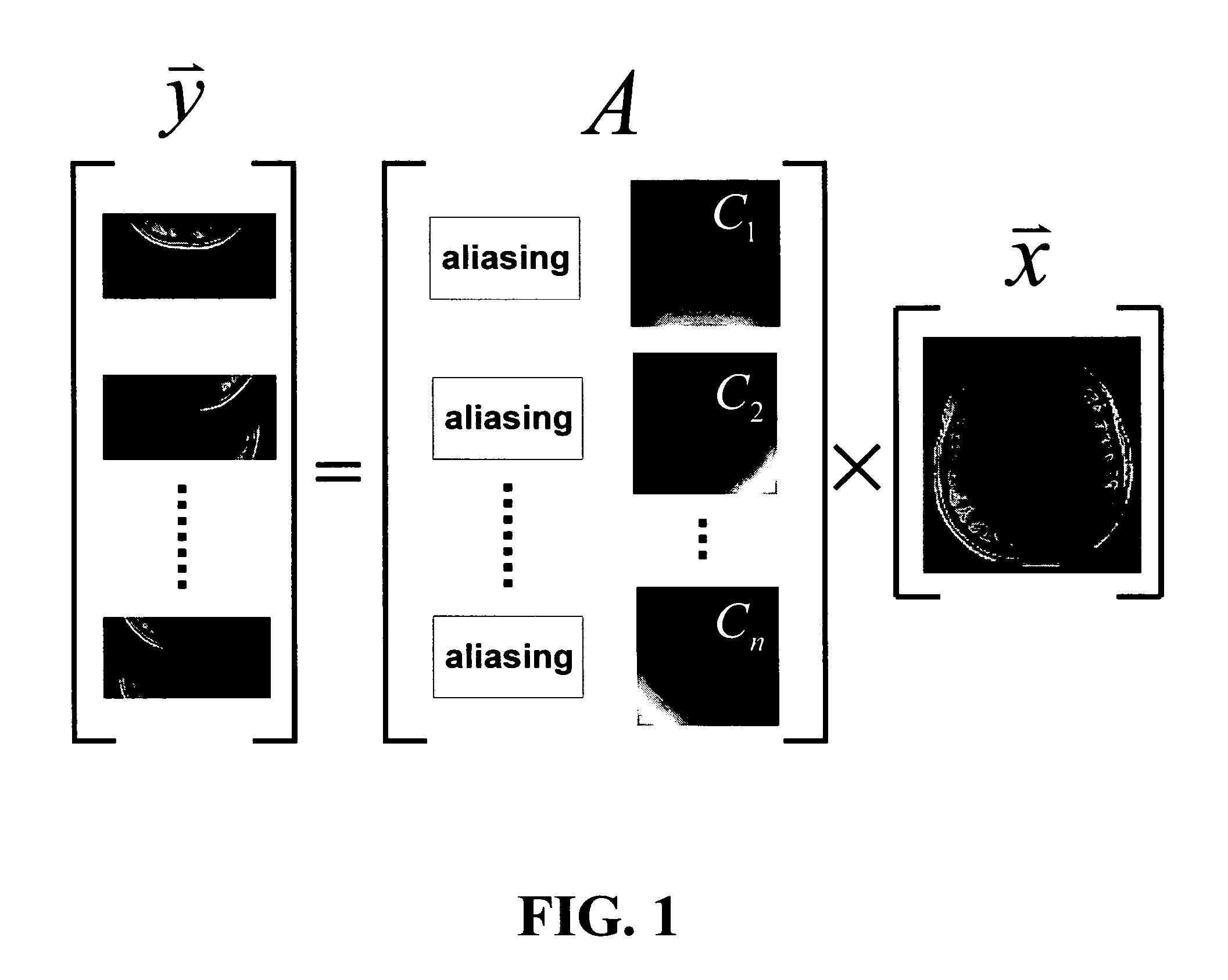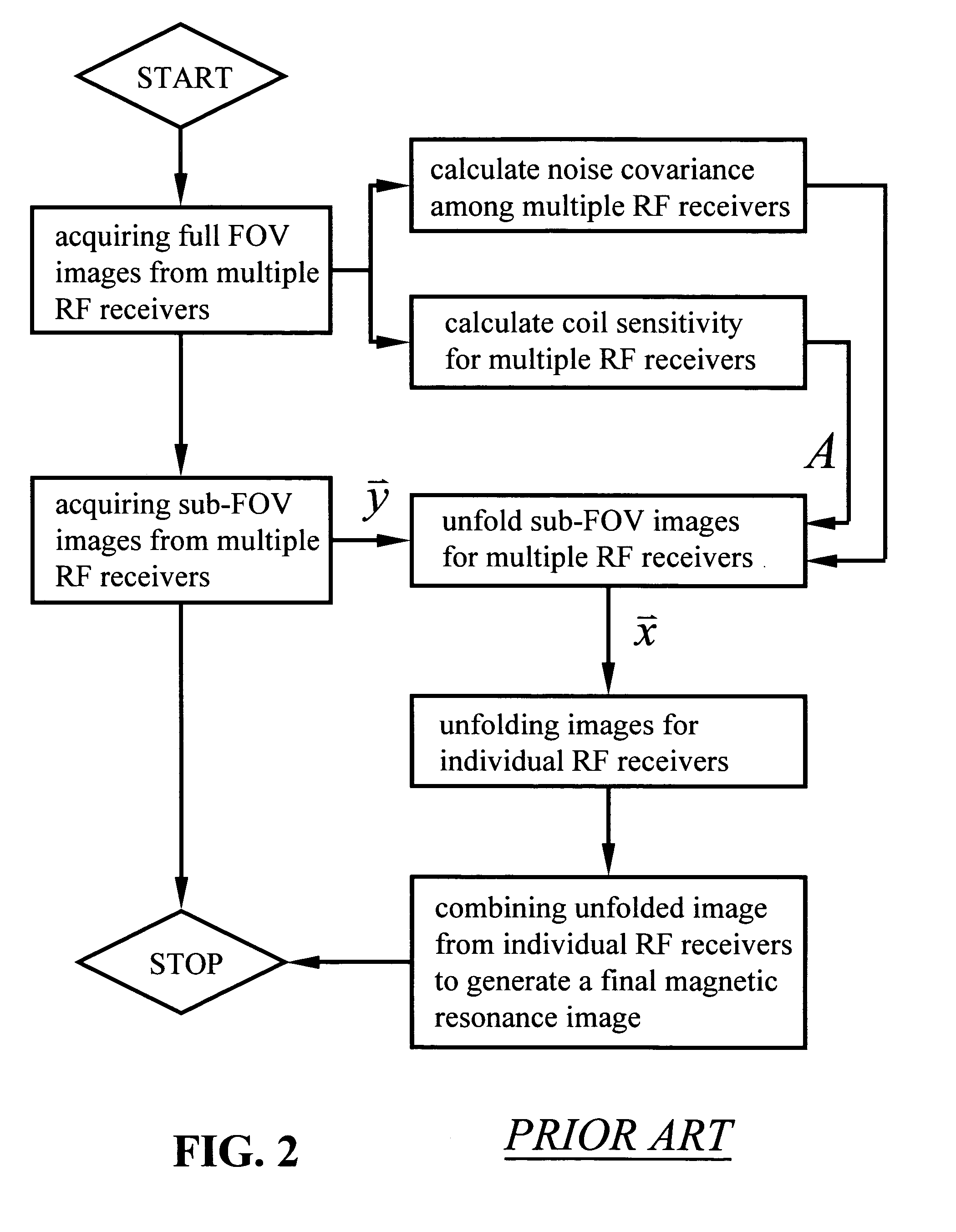Method for parallel image reconstruction using automatic regularization
a parallel image and automatic regularization technology, applied in the field of magnetic resonance imaging, can solve the problems of no systematic approach described to estimate the regularization parameter of sense image reconstruction, the spatial distribution of noise arising from unfolding sense images has not been well characterized when regularization is employed, and achieves the effect of reducing the noise amplification of reconstruction
- Summary
- Abstract
- Description
- Claims
- Application Information
AI Technical Summary
Benefits of technology
Problems solved by technology
Method used
Image
Examples
example
[0046]Experiments were performed on a 1.5T clinical MRI scanner (Siemens Medical Solutions, Inseln, N.J.) using a homemade 2-element array. Each element is a circular surface coil with a diameter of 5.5 cm tuned to the Larmor frequency of the scanner. The two element coils have a 1.5 cm overlap to minimize inductive coupling. The array was mounted on a curved plastic with a curvature radius of 20 cm to conform the phantom and subjects. A 2D gradient echo sequence was used to image the homogenous spherical (11.6 cm dia.) saline phantom. The imaging parameters are: TR=100 msec, TE=10 msec, flip angle=10 deg, slice thickness=3 mm, FOV=120 mm×120 mm, image matrix=256×256. The same scan was repeated with the number of phase encode lines reduced to 75%, 62.5% and 50%.
[0047]The in vivo anatomical images were acquired using a 3T scanner (Siemens Medical Solution, Inseln, N.J.) with an 8-channel linear phased array coil wrapped around the whole brain circumferentially. Each circular surface ...
PUM
 Login to View More
Login to View More Abstract
Description
Claims
Application Information
 Login to View More
Login to View More - R&D
- Intellectual Property
- Life Sciences
- Materials
- Tech Scout
- Unparalleled Data Quality
- Higher Quality Content
- 60% Fewer Hallucinations
Browse by: Latest US Patents, China's latest patents, Technical Efficacy Thesaurus, Application Domain, Technology Topic, Popular Technical Reports.
© 2025 PatSnap. All rights reserved.Legal|Privacy policy|Modern Slavery Act Transparency Statement|Sitemap|About US| Contact US: help@patsnap.com



